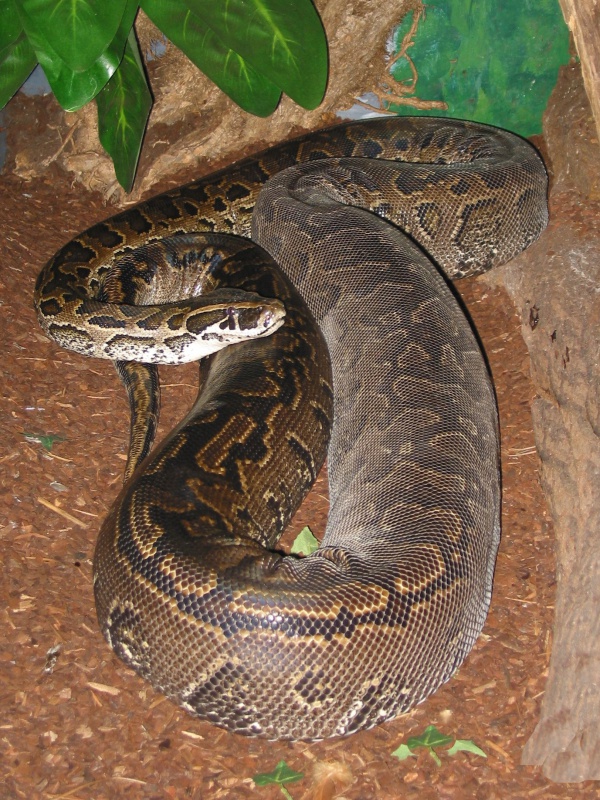Facts About African rock python
The African rock python, Africa's largest snake, is a formidable constrictor native to sub-Saharan Africa. Belonging to the genus Python, it has two subspecies: one inhabiting Central and Western Africa, and the other residing in Southern Africa. These impressive serpents can exceed 6 meters in length and are capable of preying on large animals like antelopes and crocodiles.
Despite their fearsome reputation, attacks on humans are infrequent. The African rock python reproduces by laying eggs and is notable for its maternal care, as females protect their nests and hatchlings. Unfortunately, the species faces threats from habitat loss and hunting.
First described in 1788, the African rock python's scientific classification includes names derived from Greek mythology as well as Dutch and South African references. Physically, this snake has a robust body adorned with patterned blotches, a triangular head, and heat-sensitive pits around its lips. The southern subspecies is generally smaller and exhibits distinct characteristics.
These pythons are found throughout sub-Saharan Africa, thriving in forests, savannas, and areas near water. They hunt a variety of prey through constriction and typically reproduce in the spring, with females diligently caring for their young.
While human encounters with African rock pythons are uncommon, there have been rare instances of attacks, though few have resulted in fatalities. The snakes are sometimes hunted for bushmeat, and their habitats are increasingly compromised by human activities. Although not currently endangered, they are listed on Appendix II of CITES. In the Florida Everglades, where they are considered invasive, efforts are underway to control their population. Interestingly, the snake holds cultural significance for some groups, such as the Luo people of Kenya.

 Ethiopia
Ethiopia